
Climax Scene: The Biggest of the Big Scenes
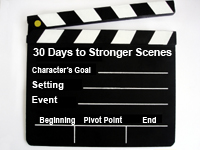 Join us on Facebook for a discussion of scenes. Join us on Facebook for a discussion of scenes.

The climax scene of a story is extremely important. It’s the point at which everything comes to a head and is resolved. If you think about big scenes, this is the biggest: big in action, big in emotion, big in impact on characters, big in the length of the scene.
- Direct Conflict. The main character and antagonist/villain must be present and must go head to head in the climax of the story. No substitutes allowed for either. You may have henchmen stand in for the villain at other points of the story, but not in the climax.
- And so, a word about Villains. One question I often hear is, “Do I really need an antagonist/villain” Usually, these writers have the main character struggling against something like a storm, or an evil empire, or something more abstract. In these cases, no, you don’t have to have a villain; but if you can embody the evil from that abstract opposition in a character, you’ll have a stronger story. Think about Star Wars, where Luke Skywalker struggles against the evil Empire. Even in that space opera, you have the local representative and embodiment of the evil in Darth Vadar. Strengthen villains whenever possible.
- You must write the climax.
No fair turning the page and reading, “The next morning, she thought about the fight with Jeremiah.” Write the thing. Don’t avoid the emotional toll it will take on you as a writer; you must write the climax as a SCENE. If there’s ever a place where a flashback is inappropriate, this is it. Do the outer and inner conflicts come together in the climax? If not, revise for that.
- Solve the problem you set up. The climax must refer back to the original problem you set up for the main character/novel through-line. Even if the character’s goal has morphed in some way, it should still relate to the original set-up. Else, change the opening; or change the climax to match up with the original opening, your choice.
- Emotional Costs? What cost does the main character have to pay for success? Success can’t come easily in the climax and there must be an emotional cost to pay. Else why would the reader stay with you?

 Join us on Facebook for a discussion of scenes. Join us on Facebook for a discussion of scenes.
Preparing for a Big Scene
So, you know what your big scene is, but realize that some things need to be in place for the scene to work. Preparing for a big scene is important to its success. You can write the scene first, then go backwards and add in what’s needed to prepare the reader for it; or you can plan the whole thing. Either way, doesn’t matter; what matters is that in the final draft, you’ve done the preparation work for the big scene.
- Foreshadowing
Scene, characters, events, setting–you can foreshadow anything that will happen in a big scene, as long as it’s done with a light hand.
For example, in the Star Wars movie, The Empire Strikes back, Luke Skywalker is learning to be a Jedi warrior. Yoda insists he enter a cave, where he finds a vision of Darth Vader. Luke and Vadar fight in what is a foreshadowing scene of the real fight to come at the climax of the story. Here, Luke wins! But when he chops off Vader’s head and flips open the visor, he sees his own face. By allowing his anger to defeat Vader, he’s lost his own soul. Later when he fights Vader for real, he controls his anger, loses the battle–yet, saves his soul. Without the foreshadowing scene in the cave, we couldn’t really know what’s at stake.
Make clear what’s at stake. Make sure, as above that the reader knows the, “So what?” Why does this scene really matter. To do that, you may need smaller scenes that set this up.
Mini-conflicts come to a head. If the action in the big scene is big, it’s partly because that scene is a culmination of smaller conflicts that have come to a head. The big scene is “the last straw.”
Emotional Conflict. Likewise, you need to build the inner or emotional conflict and bring it to a head. Confusion, anticipation, anguish, worry–emotions escalating and coming to a head in the big scene are what you want. But those emotions must be set up in the smaller scenes.
In order for a big scene to be big, it must be set up. Have you done that yet?

 Join us on Facebook for a discussion of scenes. Join us on Facebook for a discussion of scenes.

In a poll of school librarians this month, 99% said book trailers are effective in interesting a student in a book! Wow! Read more about the survey here.
What is a big scene in a novel?
It’s a moment of high drama, with lots of action, reaction and emotion. Well, it could be low action, if you’re writing a character story, but it’s still a moment that has lots of drama from your drama queen or king.
Planning a Big Scene
Because these a

By: Darcy Pattison,
on 11/19/2010
Blog: Darcy Pattison's Revision Notes
( Login to Add to MyJacketFlap)
JacketFlap tags:
scene, write, chapter, how to, novel revision, opening, lines, book, fiction, novel, Add a tag
 Join us on Facebook for a discussion of scenes. Join us on Facebook for a discussion of scenes.
I’ve written about opening scenes so many times that today, I’m going to send you off to read some of these:
- Larger Than Life Character in Chapter 1.
Maass suggests, for example, that you think of things your protagonist would never ever say, think or do; then find a situation in which they MUST say, think or do that very thing.
- Improve Your Weak Opening
But what’s missing in many openings is a character to care about.
- Story Innocence
Orson Scott Card says it a different way when he suggests that the only thing you withhold from a reader is what happens next.
- Vivid Images: Sensory Details
Everyone agrees that a writer’s ability to create an image in a reader’s head through their words is integral to fiction and effective novels. When writers and editors push toward imagery vivid enough to transport readers to new worlds, there are many options.
- 10 Ways to Start a Novel: Opening Lines
I’ve illustrated them with the “100 Best Lines from Novels,” as chosen by the editors of the American Book Review.
- Opening Chapters of Novels MUST Accomplish These Goals
- Prophetic Openings: Foreshadowing the Right Way
- 5 Ways Openings Go Wrong

 ![]()
 Join us on Facebook for a discussion of scenes. Join us on Facebook for a discussion of scenes.
Flashbacks Effective in Deepening Novel
When you are writing or revising a novel, you want to be sure your story is believable and the characters motivated. Often, this means you must tell something that happened before the novel began. In other words, a flashback is a bit of back story that is presented out of chronological order. The flashback relates to the current scene, deepens character motivations or otherwise illuminates the current action of the novel.
First, write the scene with the current action and make it as fully developed as possible. If you’re going to interrupt the on-going action of the novel to insert this back story then at least give the reader a full scene that will keep their interest.
Then, write the flashback as a fully developed scene. Again, if you are messing with the time line or chronology of the novel, it should be done in such a way to keep the reader’s interest. This doesn’t mean it has to take up pages; a paragraph of a mini-scene might be perfectly reasonable. On the other hand, the flashback might need to be several pages long in this particular novel. Do what works.
Now, integrate the two scenes. Figure out where exactly in the novel the reader needs this bit of back story in order to understand what is really going on. Put the flashback as close to that as you can. Then smooth out the transitions.
The trickiest part of a flashback is getting into in and out of it. Try to do it with a single sentence both times. One sentence signaling a time shift, and then go straight into past tense like you would in any scene of a novel.
I remember that cloudy evening, the night before the tornado. Dogs whined restlessly, cattle kicked over buckets of full milk, and chickens scratched endlessly at the dust, all warnings that something bad was coming.
Coming out of it, use a single sentence again.
I walked away without a scratch on the outside, but felt like a stray splinter of wood had stabbed my heart. Now, looking at Jeremiah, the coward of that night of horror, I couldn’t believe he was asking me to be brave.
(Wow! Where did THAT story come from? I was just trying to think of something exciting, to demonstrate that the flashback needs to be a high point or a low point in a character’s life, something worthy of a dedicated flashback. There also needed to be some emotional hook, so you can sense that the Jeremiah’s behavior during the tornado was cowardly and that affects the current scene.)

Ways that Flashbacks can go Wrong
- Too early. Too often, I see a flashback in the second paragraph of a draft! No! Or, on the second page. No! Or the entire second chapter is a flashback. No! Only use a flashback at the point where it will directly impact

By: Darcy Pattison,
on 11/17/2010
Blog: Darcy Pattison's Revision Notes
( Login to Add to MyJacketFlap)
JacketFlap tags:
Roz Morris, sense of purpose., conflict, book, novel, change, scene, revise, edit, how to, repetition, consequences, novel revision, Add a tag
Top 5 Tips for Dynamite Scenes
Guest Post By Roz Morris

 Join us on Facebook for a discussion of scenes. Join us on Facebook for a discussion of scenes.
Have you got a scene that’s looking lifeless? Here’s how I pep it up.
Have something change.
No scene should ever go as the reader expects. If you have a character set out to buy a pint of milk and all they do is amble to the shop, buy their stuff and walk back, you’ve hit the snooze button. Instead, take that scene somewhere the reader is not expecting. It needn’t be a big twist. It could be tiny – a change of mood, a resolution to do something. But if nothing changes, the scene isn’t worth showing.
To keep the sense of progress through the story, a scene should always contain change. Otherwise it hasn’t earned its place in the story.
Make that change have consequences for the characters.
Suppose you add something to your milk-buying scene – the character realises her boyfriend claimed he bought a certain brand of cigarette from the corner shop, but that shop doesn’t sell them. So where did he get them? And isn’t it odd that they are the same brand smoked by his ex? Are they seeing each other again?
If a change has happened, it should have a lasting effect in the story. Again, it could be small, or it could set them on a new and dastardly path. Good scenes don’t exist in isolation; they affect what comes after them. And they are affected by what happened before.
If you have to fill a blank, bring something in that you introduced earlier.
In the thick of a scene, you often have to invent details off the top of your head. Where was your minor character John last night? The cinema, you write, because it doesn’t matter where he was, he’s not very important. But go back and look at what you’ve written about John before. Is there something else you already invented that you could bring in instead? Three chapters ago, did you send him, quite casually, to choir practice? Why not send him there again, or to the chemist to get throat lozenges? Now we’re fleshing John out and with very little effort.

Bringing back ideas you used before is a great way to make the world of your story feel more solid.
Even if what you’re using is trivial it can build up – and who knows where it might lead? It’s a technique called reincorporation. It makes stories elegant and satisfying. And it adds to the feeling that everything matters.
Keep a list of everything you plucked off the top of your head because you needed to fill a blank space. You’d be surprised how useful it will be.
 Join us on Facebook for a discussion of scenes. Join us on Facebook for a discussion of scenes.
 November discount: 10% off orders of $30 or more. Use discount code: scene. November discount: 10% off orders of $30 or more. Use discount code: scene.
As you look over your scene list, you must ask yourself if every scnne is needed. Here are two good reasons to omit a scene:
Lack of emotions
One scene I recently wrote just had the wrong focus. It was an assembly at school, where things got announced. But when I looked at it hard, I realized that my main character did nothing, except sit and watch the assembly happen. The secondary character was present and more active, but I hadn’t written it from her POV. Worse, I realized the conflict and emotion of the scene really happened as characters prepared to go into the scene. There were no surprises in the assembly itself.
So, I could have gone back and withheld information from characters until the assembly. I could have devised something for the main character to do, something I did in an earlier scene revision.
But this time, it felt right to just omit the assembly and instead do a couple short scenes: in one, the main character and his family get ready for the assembly; in the second, the secondary character and her family get ready for the assembly. The emotions were all in these two scenes, and actually provided better emotions.
Faster Pacing.
The assembly is actually cut and the reader (hopefully) will assume it happened. This scene cut will speed up the action of the story, moving past what the audience can safely assume to a new place of conflict. It should give me better pacing.
Need to cut, but don’t want to cut out an entire scene?
What are other reasons to omit a scene?

 Join us on Facebook for a discussion of scenes. Join us on Facebook for a discussion of scenes.
Do you make these 5 plotting mistakes?
This is cross-posted in the Build a Strong Plot, 8-post series.
-
Are you too nice to your characters?
Low tension. Give characters large, overwhelming obstacles to overcome. Of course, you love this dear fellow you created and like any good parent, you want only the best for him. But if you want readers to read and care about Fella, you’d better give him an interesting problem.
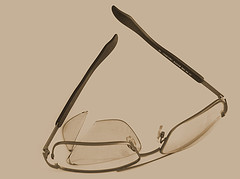
-
Do you start one story, but finish a different?
Rambling story. If you story starts with a character wanting to make the basketball varsity team, then you must answer the question at some point: does s/he make the team? Yes, there is the idea that some plots spin off into a different direction at about the midpoint of the story. This is the idea that what a character wants isn’t what a character needs. When the character fails to make the team, then s/he turns instead to photography.
In this case, the story question is really larger: can a character learn to accept his own interests, rather than be ruled by others’ opinions? (Or some variation of this.) Learn to phrase your story question is larger terms, so that you can provide a twist in the middle and still keep telling the same story.
Example: “The Lion King” starts with the question of what Simba will do when his evil uncle takes over the pride. For part of the story, Simba hides and goes after the good feelings, the good life. But the story question is larger: how can Simba take his father’s place? At first, the answer is to avoid the question entirely by banishing himself to a happy place; but as Simba grows up, he realizes he must go back to the pride and defeat his uncle.
-
Do you connect the dots?
Disconnected narrative. Can you point to a series of scenes in which the character’s emotional arc changes slowly? Can you point to a series of scenes in which the main action of the story progresses through conflict-failures toward the last major confrontation? Have you built in the possibility of success at the end? (Or failure, if you’re writing a tragedy?) Can you physically put your finger on these places?
I’m emphasizing pointing and putting your fingers on these scenes, because too often these scenes are still in our heads! The dots aren’t connecting because you didn’t write the connection, you only made the connection in your head. Make sure these are on paper.

-

By: Darcy Pattison,
on 11/10/2010
Blog: Darcy Pattison's Revision Notes
( Login to Add to MyJacketFlap)
JacketFlap tags:
book, fiction, novel, zoom, scene, write, how to, novel revision, choose scene, Add a tag
Why Plot with Scenes?
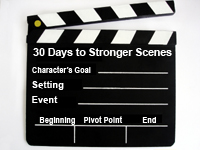
Join us on Facebook for a discussion of scenes.
Once you have a scene list, you need to decide which scenes to actually write. I’ve found it helpful to think about scenes as Zooms, or places where I want the reader to stop and spend some time noticing details.
Scenes are those sections which will embody the tone, theme, characters, action and emotion of your story. Looking at a scene list, you’ll have three choices: omit a scene, ell the scene briefly with narrative summary, or fully develop a scene.
Omit Scenes:
Omit any scene in which there is no conflict or conflict that doesn’t contribute to your theme. Also leave out any scenes in which main character can’t be present for the conflict, or isn’t directly involved in the conflict. You’re looking for drama! Conflict and tension.
Summarize Scenes: Scenes which are essential to the story, but lack drama for whatever reason. These will be minor scenes which are needed for the story to make sense, the time line to work, or the story’s logic to work, yet lack drama and tension.
Fully Develop Scenes. When a scene directly features and/or impacts the main character, it’s a potential scene for full treatment. Stories live or die by the choice of scenes to use in telling the story. Each author will choose slightly different scenes and will develop them in different ways, that’s the beauty of reading fiction even if it’s a plot with which we are familiar. It’s why there can be hundreds of Cinderella stories across the world.
It’s at this crucial point, your storytelling sensibilities will come to life. What scenes will you Zoom in on where will you omit or summarize a scene? It’s your choice.
 November discount: 10% off orders of $30 or more. Use discount code: scene. November discount: 10% off orders of $30 or more. Use discount code: scene.


By: Darcy Pattison,
on 11/8/2010
Blog: Darcy Pattison's Revision Notes
( Login to Add to MyJacketFlap)
JacketFlap tags:
vivid images, book, fiction, novel, Cinderella, plot, scene, write, how to, novel revision, sensory details, actions, Add a tag
It’s NOT a Scene if it Doesn’t Have Conflict
 Join us on Facebook for a discussion of scenes. Join us on Facebook for a discussion of scenes.
Now that you know how to write a basic scene, let’s move to the overall task of plotting a novel by using scenes. The first task is to consider what scenes are possible for your story.
Let’s take the case of Cinderella. What are the possible scenes for this story?
- Cinderella’s mother & father meet
- Cinderella’s mother & father fall in love and marry
- Cinderella’s mother & father have a romantic night and she’s conceived
- Cinderella is born and her mother dies
- Father meets a new woman and woos her
- Father marries new woman.
- Stepmother and stepsisters move in.
- Stepmother and stepsisters are cruel.
- King declares a ball.
- Step-family says Cinderella can’t go.
- After they leave for the ball, Cinderella meets her fairy godmother who transforms her.
- Cinderella attends the ball and falls in love with Prince.
- Cinderella flees ball and leaves behind her shoe.
- Prince seeks woman who can wear the shoe.
- Prince finds Cinderella, they get married and live happily ever after.
Notice that I’ve left out many, many possible scenes? Partly that’s because a simple list like this isn’t sufficient; instead, you need to focus the scene list in some way.

Use Plot Templates to Focus Scene List
Looking at the 29 possible Plot Templates, you could make a case for any of these plots:
- Quest: Cinderella seeks a better place in life and finds that she must set aside appearances to see the inner character of people.
- Rescue: From the Prince’s POV, he must rescue Cinderella from the clutches of her evil step-mother.
- Revenge: How Cinderella takes revenge on her step-family. Not often told, but it’s a possibility.
- Rivalry. Usually the step-sisters are awful and not real competition to the lovely Cinderella. But what if (and great stories are made from what ifs!) one of the step-sisters is a real rival. It’s a new twist on the story.
- Underdog. Of course, this is the classic Cinderella story.
- Love. Or is her story the classic love story?
- Ascension. Cinderella’s rise to power in the kingdom.
Each plot pattern would require a different set of scenes, emotions, motivations. Let’s take the unusual one of Rivalry, just for fun.
Cinderella as a Rivalry Plot
First, recognize the minimum required by your chosen plot template.
- Characters: Cinderella, Prince, Wonderful Step-Sister
- Plot:

By: Darcy Pattison,
on 11/7/2010
Blog: Darcy Pattison's Revision Notes
( Login to Add to MyJacketFlap)
JacketFlap tags:
conflict, book, fiction, novel, scene, write, tension, how to, novel revision, Add a tag
When, How, and Why to Cut from Scene to Scene

Join us on Facebook for a discussion of scenes.
Importance of Scene Disasters
Are you personally a peace maker? Do you try to smooth out conflict among your friends? Are you in trouble when you try to write fiction!
Scenes must end in disaster, at least a majority of the time. Fiction is about conflict and that means that scenes should end with conflict and tension. The situation just got worse for the main character.
 November discount: 10% off orders of $30 or more. Use discount code: scene. November discount: 10% off orders of $30 or more. Use discount code: scene.
I’m emphasizing this point by giving it a post of its own, it’s that important. Too many authors begin first drafts loving their characters so much that nothing bad happens.
Boring.
Something must change by the end of a scene:
- New information comes to light and we suspect it’s important information.
- Someone’s feelings/emotions change for the worse.
- A character fails to obtain something.
- Partial success, but it only brings discouragement; the cup feels half empty, not half full.
Make sure that every single scene has conflict and ends with something worse than before.

Writing Scenes: Planning

Join us on Facebook for a discussion of scenes.
Here’s a basic template for planning a scene. Later, when you get ready to write the scene, you might want to list individual actions in what’s called a “beat sheet.” But when you’re just planning scenes, you want these basics.
- Basics
- Setting:
- Where are we
- What is the Occasion
- Who is present:
- What happens, or what is the plot event
- Emotion
- Emotional Pulse/subtext running through the scene:
- Emotion at Beginning:
- Emotion in middle
- Emotion at End:
- Plot
- Plot Goal:
- Plot Complication:
- Plot Complication:
- Plot Complication:
- Disaster at end of scene:
- What gets reviewed in between scenes This is the emotional reaction to what just happened and can be covered in a single word. (Angry, she went. . . ) or can take a couple pages. After the emotional outburst, the character thinks about everything and decides what to do next, which leads to. . .
-
Goal of next scene:

When to use Narrative and when to use Scenes
 Join us on Facebook for a discussion of scenes. Join us on Facebook for a discussion of scenes.
This is the great Show-Don’t-Tell debate. When should you take the time in a story to present a fully developed scene?
To understand this, let’s look at options.
Scene. First, is the fully developed scene that we discussed in SCENE 2.
Narrative summary. For a narrative summary, you leave out many of the details and just briefly tell events. This feels like someone just giving you highlights and may not include all the elements of a scene. It’s just getting you from scene to scene, while making sure you don’t miss anything important. It’s TELLING. So, don’t use it often. But when you want to compress the time line, skip briefly over events or speed up things, use a narrative summary.
Transitions. Another section of text might be a quick transition. It may have action, dialogue, thought or emotion, but it’s purpose is to get you from point A to point B. Often it’s narrative summary, but it can be much shorter. For example, you might start a follow-up scene like this: “Later, she went. . . “ Later is the transition and it’s a single word.

Narrative summary and transition are important in moving a story forward. Well-developed scenes, though, are the meat of the story and where you’ll camp. You need all of these in your tool box, but you need to know when to pull out which.


By: Darcy Pattison,
on 11/2/2010
Blog: Darcy Pattison's Revision Notes
( Login to Add to MyJacketFlap)
JacketFlap tags:
novel revision, goal, book, fiction, character, scene, relationship, write, action, how to, Add a tag

Join us on Facebook for a discussion of scenes.
SCENE 1, introduced the idea of scenes and its basic elements. Here, we want to break it down even more into elements that you can use.
Elements of a scene
Scenes are made up of Actions, Thoughts, Dialogue and Emotions.
- In every scene, a character has external goals and internal goals. External goals might be something like getting a cup of coffee to drink, while the accompanying internal goal is getting to talk with the pretty barista one more time. These goals can be expressed through actions, thoughts, dialogue or emotion, usually all four.
- Each scene has a structure.beginning, middle, end. This implies that some event is happening. It may be walking inside a house, or it may be a scene where a character finds out something important. Sometimes, you even want to make a distinction between the external and internal: the scene takes place in the stands of a football game, but it’s really about discovering the villain’s real name. in The Scene Book, Sandra Scofield, uses two terms, the occasion and the event. Here, the Occasion is watching the football game; the Event is finding out the villain’s real name. In other words, the Occasion is the external circumstances; the Event is the actions that directly relate to your plot.
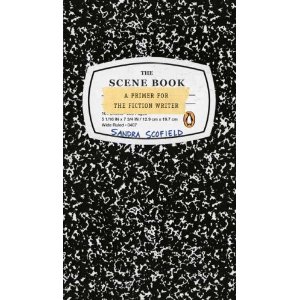
Scenes open in various ways, but the goal of an opening is to hook the reader, just as you would in the opening chapter. The middle involves obstacles and complications to the goal, and the end is usually a disaster. Somewhere, there’s a pivot point, a place where the action speeds up, changes direction, or twists off in a tangent. Things don’t go as expected. It may be just deepening of tension or emotion.
- Pulse. Sandra Scofield says there’s a pulse to every scene. For me, it’s the subtext that is happening. Two characters talk but that means nothing without understanding the characters and situation. When we understand the underlying issues, we know that the conversation may be about eating apples or oranges, but really, it’s a quarrel between lovers; or it’s between a husband and wife and is really about who has control of the family budget; or it’s between a grocer and stock boy and is really about job expectation and job performance. In well told stories, often the underlying issues (control of the family budget) isn’t stated explicitly. That’s good: remember the adage to Show-Don’t-Tell. Talking about fruit is a good way to SHOW the strain in a marriage over the divisive issue of money.
Scofield, then, says to search for the subtext in every scene. What are the characters fighting for? What do they long for? How can you subtly add this to the scene?

By: Darcy Pattison,
on 9/22/2010
Blog: Darcy Pattison's Revision Notes
( Login to Add to MyJacketFlap)
JacketFlap tags:
book, fiction, humor, character, plot, scene, write, revise, how to, novel revision, Add a tag
My WIP is a draft of a novel that I”m going through and expanding. When I read through the draft it felt like a very long treatment, a long synopsis. Scenes weren’t detailed, emotions were nebulous.
As I do this, there are questions that are helping me revise each scene.
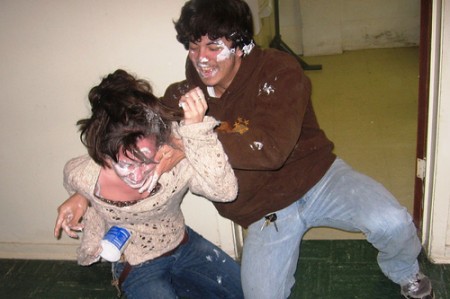
- What is my character fighting for? I’m trying to pinpoint in each scene what is at stake. For many scenes, it’s something small, just getting another to agree or getting something to eat. But usually, I can dig deeper into the relationship and start to figure out why this is the right scene to dramatize: because something in the relationship is at stake.
- What is the moment just before? I want some emotional baggage to carry over from scene to scene. If my main character (MC) is angry at the end of the last scene, how will that affect the new events. What questions and emotions linger that could come into play here? Can I escalate or de-escalate the emotions?
- What is the humor? I’m acutely aware that I have a weak funny bone. Instead, I go more for irony. OK. I’m trying to play up that irony in every situation I can. If you’re naturally funny, you want humor even in the most tragic scene. Why? Because it adds depth when you can make a reader laugh and cry at the same time.
- What is the importance? Why are these events important to the story? I try to make this clear; I try to raise the stakes; I try to embue every action with a sense of urgency; I try to add passion to the dialogue, letting my characters take sides and argue about something they deeply care about.
- What is discovered? Surprise–it delights readers. I try not to hold back secrets. Orson Scott Card has said the only thing you withhold from your readers is what happens next. Let the reader in on the character’s hopes, dreams and secrets; but don’t foreshadow too much. Story openings like this are common:
It was to be the strangest day of my life.
I know you’ll find famous books with similar openings. But they don’t work for me because as a reader, I want to find out events as they happen. I don’t want a character/narrator to filter events for me by declaring the coming events as strange. Instead, I’d rather experience them myself and decide myself. I like surprise. At least in fiction.
"Show, don't tell" is probably the most common advice given to writers. But that's not the whole story. I've been thinking a lot about this issue in the past weeks. It came up in both large and small ways in a number of the critiques I've done for other writers recently, and it was flagged in my manuscript by a couple of the writers in my wonderful new critique group. I started thinking about researching my thoughts and doing a blog post, but serendipidously, several of the blog's I regularly read posted articles on the subject last week. Michael Bourret described how he has been seeing a lot of manuscripts that aren't engaging or engrossing because of too much telling. Mary Kole had a post on "Good Telling" based on an essay she received from Melissa Koosmann, one of her blog readers. The Plot Whisperer (Martha Alderson) also had a great post on how people may hide strong emotions. So I'm going to tell you what I think. And I want to know what you think. Tell me if you agree or disagree, and let me know how much you think style, skill, POV, and genre fall into the equation. First, there's a difference between narrative and scene, and each has its role in a novel. - A scene takes place in real time, in an idenfied location, and it involves action and/or dialogue between characters. By definition, a scene is "show." It engages the reader, engrosses them, and makes them feel connected to what the characters are feeling.
- Narrative summary describes--"tells" about--action or an event, but doesn't show it. Just as you would have a hard time selling a manuscript that's all narrative, you would have a hard time getting a reader to enjoy a book that is all nonstop action. As readers, we need time to breathe and absorb. Narrative serves that purpose.
For me, deciding whether something should go into scene is part of planning the novel, and it comes down to issues of tension and pacing. If you think you need a scene, here are a few questions to ask yourself: - Is the event or information significant enough to the story to warrant a full scene?
- Does it move the story forward?
- Does it lead the character toward a turning point or plot point, preferably both, that you want the reader to remember andn experience along with the character?
- Are the events action or reaction? In other words, is something happening, or are the characters making decisions based on something that has already happened?
- If it is action, does it directly impact the POV character and are you giving her an opportunity to react to it?
- Is there identifiable conflict between two characters, between what your main character wants and what she needs, or preferably both?
- Are you providing important information that a reader is likely to skim over, misunderstand, or not care about in narrative form? Remember, the reader doesn't know what you know -- that it's important.
If the answer to any of those questions is affirmative, then you probably don't want to put information into narrative. This goes double for plot devices such as memories, monologues, and so forth. Flashbacks and visions, well-crafted and used sparingly, may work as scenes, but bear in mind that you have to give characters time to react to them. They work best at turning points in your story, the same way that backstory is ideal at turning points, where information is placed in context of past and present combining to help the character make a decision that will lead to resolution an
We all know that a novel is about conflict. No one wants to read about people living happily ever after--that's why it isn't in the fairy tales. But a good novel, a great novel, isn't just one big conflict. It's a series of tense scenes driven by inner turmoil, polite warfare, and open confrontation, that follow each other in the classic formula of action, reaction, and complication. It's easy to make the mistake of believing a scene simply moves the plot forward by unfolding action or revealing information. It does that, but to be effective, a scene also has to establish a specific goal the main character wants to achieve, develop conflict that blocks the character from getting what she wants, and add complications to the plot as the character fails to reach her goal and must react to disaster. As you develop your scene or break down your novel revision by looking at your scenes individually, ask yourself the following questions: - What is the mood of the scene?
- Who is the Point of View (POVC) character in this scene?
- What does the POVC think she wants or what is she supposed to want? (External goals)
- What does the POVC really want, deep down inside? (Internal goals)
- How do the POVC's internal and external goals oppose each other?
- How do these goals fit into the overall plot conflict?
- How do these goals fit into the overall story theme?
- Who are the other characters in the scene?
- What do each of the other characters want that is in opposition to the POVC's internal and external goals?
- Who are the allies and opponents among the other characters? Who are they each rooting for?
- What emotion do you want the reader to feel during this scene?
- What emotion(s) does the POVC feel?
- How can you make the POVC feel something other than the obvious?
- What action(s) would best showcase the POVC's emotion(s)?
- What elements can you introduce to make the POVC simultaneously feel the opposite of the primary emotion?
- As the writer, what are your goals for the scene?
- What information do you need to to tell the reader?
- What action must occur?
- What new characters must be introduced?
- What revelations are you going to unveil about these characters?
- What character growth do you need to show?
- How can you take each of your goals and satisfy them in a way that pits the characters against each other or underscores the conflict between the POVC's internal and external goals?
- How can you make it even harder for the POVC to achieve her goals?
- What physical obstacles can you place in front of your characters?
- What setting would make those physical obstacles even more obvious?
- How can you make that setting more unique and memorable?
- How can you twist the setting to make it unexpected?
- What memories and emotions does the setting bring out in the POVC?
- What oblique objects or details in the setting will help you underscore the POVCs emotions?
- What kind of weather would highlight the mood of the scene?
- Can you make the weather work against the POVC in any other way?
- How does what happened in the scene make the POVCs situation and the overall situation worse?
- What impossible decision does the POVC have to make after this scene?
- How does that decision go against her needs, desires, or moral principles?
- What questions does this scene raise that force the reader to continue reading?
Now that you have the framework of your scene in mind, do the following: - Visualize the scene.
- Find a striking opening and closing image.
- Create a compelling opening line that raises questions and highlights the tension.
- Write a closing line that is either a cliffhanger,
Stealing from Life: You Can’t Make this Up
I was talking to my friend, LFP, and he told me about a funny thing that happened on the way to work.
It started with a retriever. LFP reads electric meters in a rural area, driving a company truck from house to deer camp to trailer to house. Yesterday, a retriever started following the truck, just keeping them company. The roads were clear, but ditches, fields and driveways-in-the-shade still retained some ice from last week’s winter storm.
Retriever PLUS. Driving along, retriever following, LRP drove up to the next house. It was a nice house, with a two-car garage which was open. Chickens roamed freely in and out of the garage, and as you might expect, the retriever bounded after them. Now there was squawking chickens and a barking dog making a ruckus while LFP tried to get the meter read without dying of laughter.
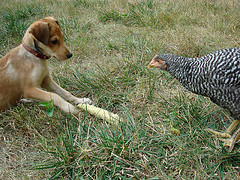
Retriever Plus Chickens Plus. But wait. One of the chickens, trying to dodge the retriever, dashed into the garage. The dog leapt after the chicken and hit a patch of ice and slid, not stopping until he hit a large trash can full of aluminum cans to recycle. Can you hear it? Chickens squawking, dog barking, cans clattering.
Retriever Plus Chickens Plus Clattering Cans Plus. Oh, but it gets better. Now, a man, dressed only in boxer shorts, dashes out of the house. He carries a broom and starts swatting at the dog, protecting his precious chickens. Swat, squawk, bark, clatter.
Retriever Plus Chickens Plus Clattering Cans Plus Boxer Shorts Plus. Oh, yes. The man suddenly hit a path of ice. Off balance from swatting at the poor retriever, who was just having an adventure, the man slid, lost his balance, dropped the broom, windmilled his arms, and flipped neatly, landing on his boxer shorts.
Thump, swat, squawk, bark, clatter. And now laughter. LFP said it was the funniest thing he’d seen in months.
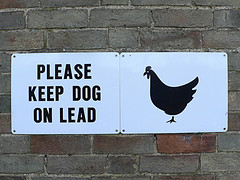
Writers Listen to Life
What does a writer do with something like this? Laugh.
And file it away for reference.
Because my imagination couldn’t come up with something that good. The slapstick humor, the way the scene and event builds — what a great model for a scene in my next novel. Times like this I’m reminded how important it is to listen to real stories about what’s happening around me.


By: Darcy Pattison,
on 2/1/2010
Blog: Darcy Pattison's Revision Notes
( Login to Add to MyJacketFlap)
JacketFlap tags:
emotion, check list, checkpoint, cohesion, voice, structure, transition, setting, stakes, plot, dialogue, scene, action, Add a tag
Does your Scene Pass this Checklist?
- Where/When. (Setting) Did you orient the reader at the beginning of the scene? Does the reader know where this takes place: room in house, city, state, country, etc? Does the reader know when this takes place: time of day, season of year, place within chronology of story? If the answer to where or when is no, do you have a firm reason for leaving the reader disoriented?
 Do NOT Pass Go Until You've Passed this Check List - Stakes. Are the stakes of the scene goal clear? If the protagonist fails, do we understand the consequences? Are the consequences substantial? Can you put more at stake, or make it matter in some way?
- Structure. Is the structure clear, with a beginning, middle, pivot point and ending? Is the chronology of the scene clear (did you use transitions such as then, later, before, after, etc.)?
- Actions. Are the actions of the scene interesting, and told with active verbs and great clarity?
- Emotions. Are the emotions clearly stated or implied? Can the reader empathize with the characters? Does the reader weep or laugh, even when the character can’t or won’t?
- Dialogue. Does the dialogue move the scene forward or is it empty chit-chat? Are there minor conflicts embedded in the conversations?
- Language. Are you telling or showing? Does your storytelling have clarity and coherence?
- Voice. Does the language create the proper mood, tone, voice?
- Transition. Does the scene make a smooth transition to the next scene? If you use a scene cut, does the reader have enough information to follow the cut without getting confused?
- Cohesive. Do all the elements work together to create a gestalt, a scene that is better than the sum of its parts?
Where does your scene fall down? Revise. You know the drill.


By: Darcy Pattison,
on 1/27/2010
Blog: Darcy Pattison's Revision Notes
( Login to Add to MyJacketFlap)
JacketFlap tags:
beginning, emotion, middle, how to write, turning point, pulse, book, novel, plot, scene, end, Add a tag
Anatomy of a Scene
If you dissect a scene, what do you find? Sandra Scofield, in The Scene Book: A Primer for the Fiction Writer lays out a simple, yet insightful discussion of this concept and it’s usefulness to a novelist.
Here are the basics of a scene:
- Event and Emotion: Something happens and it makes the reader feel something. We’ll say it again: novels are made up of external events, not interior thoughts and feelings. Yes, novels are distinguished by their ability to take a reader inside a character’s head and show us their thoughts and feelings. Yet, paradoxically, the scene is the solid framework of events to which the character reacts.
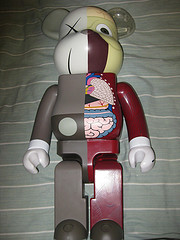
- Function: Hey, why did you write this scene and include it in your novel exactly here? For example:
- Character: character entrance, develop character’s qualities, build relationship, complicate relationship, argument, making up, romance, etc.
- Plot: conflict, twist, surprise
- Technical stuff: foreshadowing
The question is always, do you need this scene, or could you skip it or just summarize it?
- Structure: There should be a beginning, middle (including a turning point, or as Scofield describes it, a focal point), and end.
- Pulse: This is the emotional content of the scene, the underlying emotions, whether expressed explicitly or implied.
I could spend pages explaining each of these, but a demo will work better. Tomorrow, we’ll look at a film clip and see if you can identify each of these in the clip.
Meanwhile, read Scofield. Her explanations are so good, you should get it directly from the master.

Revising in the Home Stretch
I know what method of working has made the first 2/3 of my mss better. I’m just getting tired.
Don’t get Lazy Now! I’m on the last third. I know that I must rewrite a major scene for a subplot/secondary character climax. But much of these later chapter are in good shape. By now in the story, so much is set, the stakes are established, character arcs and plot arcs are underway, the scenes are focused and full of tension. My inclination is to avoid the work!

But I think it’s still essential to question everything! Runners know you can’t stop until you’ve actually crossed the Finish Line.
Questions I’m still asking myself:
Is this scene essential to the story line?
Is there a better way to present this scene?
Is there a better way to set it up?
Can I raise the stakes?
Is the dialogue snappy enough?
Could the reader possible be confused at any point?
Are the emotions still building?
Are the characters’ actions exciting?
Can I improve the language at any point?
Are descriptions static or full of emotions?
Can I connect scenes in any way?
Of course, each scene presents new challenges, so these are only a few of the concerns at this point. The main problem is to not rush this last section, to slow down and take each scene very seriously, as if this scene might prevent the entire book from working well. It’s very, very hard. I want to be finished! But I’m trying to keep to the working method that worked and trying to keep myself focused and working.
Related posts: - Omit Scenes
- Goal disaster in Novel Revision
- Compress Novel



View Next 25 Posts
|
|
 Join us on Facebook for a discussion of scenes.
Join us on Facebook for a discussion of scenes. 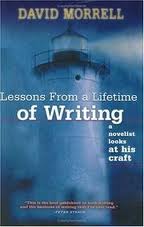 In his book, Lessons from a Lifetime of Writing, action/adventure author, David Morrell (creator of the Rambo character, among others), says he tries to write short chapters (or we can translate this to scenes, too), so that a reader can complete one chapter (or structural unit, i.e. a scene) at one sitting.
In his book, Lessons from a Lifetime of Writing, action/adventure author, David Morrell (creator of the Rambo character, among others), says he tries to write short chapters (or we can translate this to scenes, too), so that a reader can complete one chapter (or structural unit, i.e. a scene) at one sitting. 








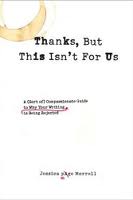



































Excellent, excellent post. Not that you need a reminder, but this blog's fantastico.
Great post and thanks for the links...Show, not tell is a difficult concept.
Like pornography you know it when you see it - ROFL! That was great. But seriously, I don't know where you find the time to go into such depth on these things. Some of your posts are like mini theses. Excellent breakdown. But, I agree most whole-heartedly with what you said near the end. That it is art. That it can be over-analyzed to death. If I try too hard to analyze it, I end up screwing up. If I write what flows/feels right - well - I don't mean that as a cop-out. I mean it sincerely. Sometimes you can drive yourself crazy.
Great post! I struggle with telling vs showing but I'm finding there are crucial times in a story where telling is actually important. All show all the time can be exhausting on the reader!
Great reminder! I think the key thing is "all things in moderation." I mean really--even with adjectives and adverbs. Sometimes you can go too out of your way to avoid a "slowly" or "quickly" or "mischievously" and the sentence or passage gets bogged down in no time flat while you're trying too hard to avoid telling. Simplicity is often better--even (gasp!) using those "weak" was/to be verbs. Go ahead, use those adjectives and adverbs! Throw in a "was" or a "were"! Use a bit of telling when necessary!
The key things are moderation, judicious usage, and necessity. Alas, and knowing when to do all that comes with practice. And revising. Lots of it. (Speaking from someone who adores peppering their work with multitudinous adjectives).
Incredible post. I'm struggling with this right now.
Great stuff here--worthy of filing for reference. Thanks for all the time spent to bring this to the table!
Hi, hope its OK to contact you here. would love to include your blog on our giveaway blog network: Giveaway Scout (http://www.giveawayscout.com). Have a look and if interested drop us a line on our contact form (http://www.giveawayscout.com/contact/). thanks, Josh
Great post. I struggle with this a lot. I'm going to have to come back and study this some more. And great idea for the critiques of those who didn't make it in the contest. It makes us all winners. Thanks for thinking of it.
This is a fantastic post on the subject. You covered all aspects and scenarios, which isn't easy to do.
A good novel will carry a balance of scene and NS, but Scene should always have the largest portion (by a long shot). Scene is the meat, NS, the bread. :)
Angela @ The Bookshelf Muse
Great post!
I loved the prologue and chapter one! Great stuff.
Thanks for your in-depth review of the subject. Sometimes I think I get a feel for this stuff by the books I read for pleasure. There always seems to be an ebb and flow with this, and somehow it works.
Great article, Martina. Lots to absorb. I'm guilty of using smirks and pounding hearts as crutches, and we have had lots of discussion about my overuse of tears (you put that one in there just for me, didn't you?). I think what it comes down to is good writing happens when the words on the page become invisible to the reader, whether those words are telling or showing, scene or narrative summary. If I had read the passages from Wicked Lovely before learning the "show don't tell" rule, I would never have noticed the telling.
Thanks for the great post! I still have trouble balancing the two. I've actually had critters tell me to "tell" (I'd written the info as a brief scene) or add more narrations. And they were right.